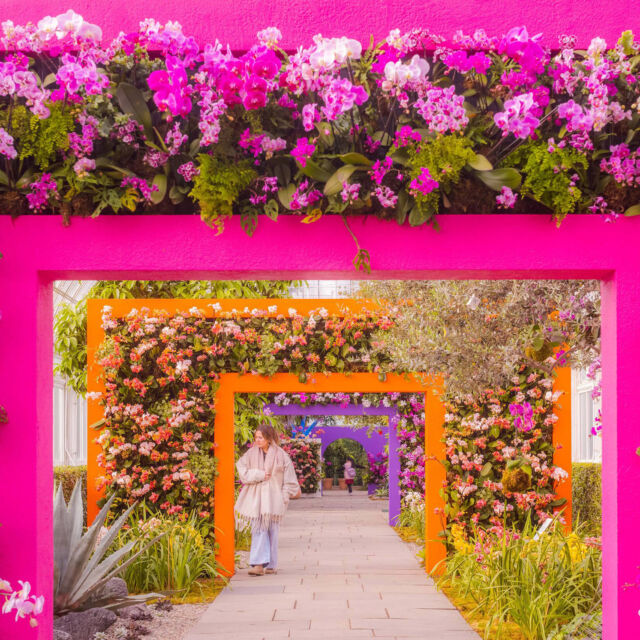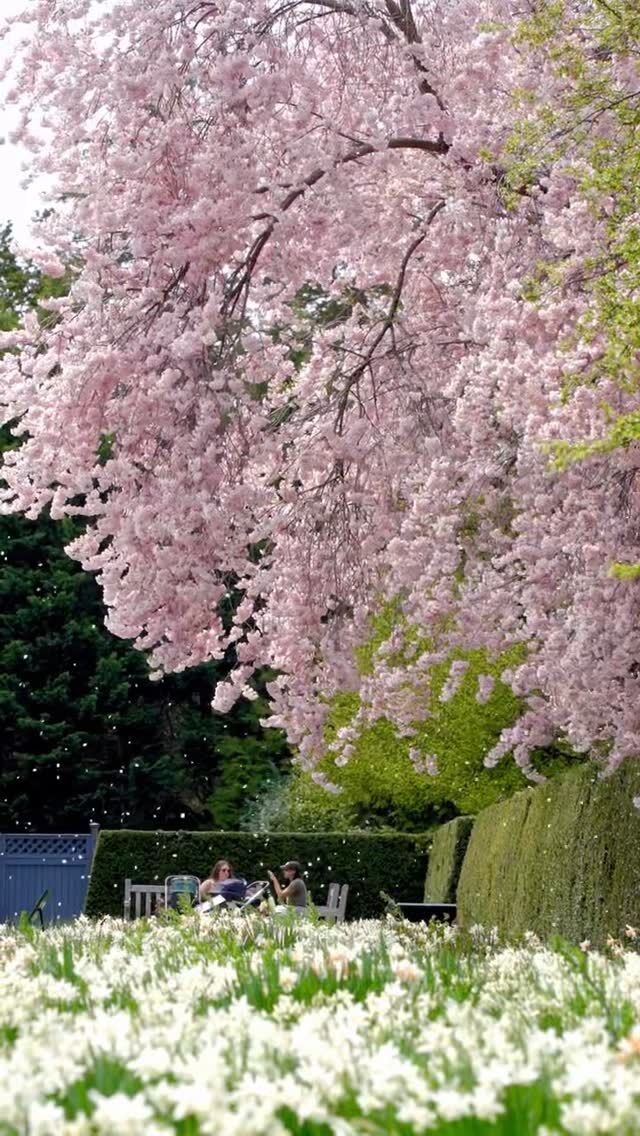Pioneering Women of NYBG
Jennifer Bernstein is Chief Executive Officer and The William C. Steere Sr. President of The New York Botanical Garden.
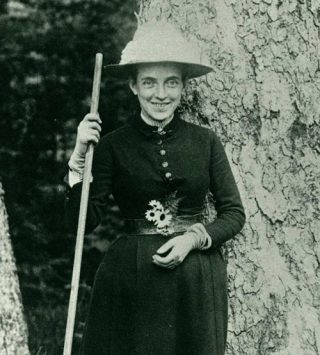
Elizabeth Gertrude Knight Britton
As we celebrate Women’s History Month at The New York Botanical Garden, I am reflecting on the women who have contributed in so many ways—seen and unseen—to this institution. Here are the stories of four pioneering women who represent distinct epochs in the institution’s history: founding, renaissance, and the Garden today.
NYBG Founding
Elizabeth Gertrude Knight Britton (1858–1934), a brilliant bryologist, educator, and passionate advocate for plant conservation, was the co-founder of The New York Botanical Garden. She, along with her husband, fellow academic and botanist Nathaniel Lord Britton, realized the importance of and need for a botanical garden in New York after visiting the great Royal Botanic Gardens, Kew near London in 1888. They worked tirelessly to galvanize support for the initiative, earning the backing of prominent civic leaders of the day, including Andrew Carnegie, J.P. Morgan, J.D. Rockefeller, and Cornelius Vanderbilt II. As a result of their efforts, The New York Botanical Garden was incorporated in 1891.
Elizabeth Britton wrote 346 papers, 170 of which were focused on mosses, and the others on ferns and wild flower preservation. In 1902 she helped organize The Wild Flower Preservation Society of America and published a series of articles on the subject in the Journal of the NYBG (1912–29); she was also a major contributor to the first Floristics Survey of the Garden’s grounds in 1898–99. Among her many distinctions, she was the only woman nominated to be one of the 25 charter members of the Botanical Society of America in 1893, served as president of the Sullivant Moss Society (1916–19), and chaired the Conservation Committee of the Federated Garden Clubs of New York (1925). In recent years she has become the focus of several studies on women in the sciences in the 19th and early 20th centuries.
At a time when professional opportunities for women were scarce, Elizabeth Britton’s accomplishments as a prolific scientist and co-founder of a major New York City institution underscore her devotion and dedication to the plant world. And the data and insights that she catalogued remain important to our ongoing conservation efforts.
NYBG Renaissance
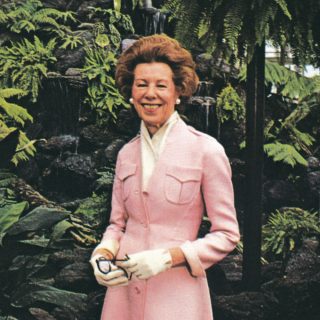
Enid Annenberg Haupt
Now an icon of the institution, one of the first buildings erected after NYBG’s founding was the Conservatory. Designed by Lord & Burnham Co., groundbreaking took place on January 3, 1899, and construction was completed in 1902.
This magnificent glasshouse, which has undergone routine restorations since 1921, came dangerously close to demolition in the 1970s after falling into a state of deep disrepair during the City’s fiscal crisis. Fortunately, philanthropist Enid Annenberg Haupt (1906–2005), who was a great supporter of American horticulture, came to the rescue with a tremendously generous contribution for restoration as well as an endowment for maintenance. By having it declared a New York City landmark, she saved the Conservatory, which now bears her name. Without her largess, we may very well have lost a treasured structure that houses our desert and tropical plant collections and serves as an educational and inspirational space for hundreds of thousands of visitors each year through special exhibitions that continue to be supported by her Estate.
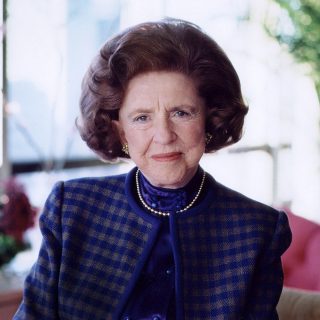
LuEsther T. Mertz
Simultaneously LuEsther T. Mertz (1906–91) became acquainted with the Garden in 1977. An early supporter of environmental causes, she helped to usher in an unprecedented renaissance at NYBG. Her philanthropy—which continues through her legacy Trust—was truly transformational, providing support for core programs as well as the restoration of the LuEsther T. Mertz Library Building, the renovation of the Everett Children’s Adventure Garden, the construction of the Workers Operation Center, and the recent restoration of the Enid A. Haupt Conservatory palm dome, to name just a few projects. And during the COVID-19 pandemic, the LuEsther T. Mertz Charitable Trust made a significant contribution to aid the Garden’s recovery efforts.
Enid A. Haupt and LuEsther T. Mertz were pioneering in their visionary philanthropy during their lifetimes, making contributions that were essential to the growth and stability of the institution—legacies that are inextricably tied to the ongoing success of the Garden.
NYBG Today
NYBG embraces an interdisciplinary approach to programming, and our reach is both global and local in scale. For example, while plant research and conservation efforts take place in far-flung regions such as the Brazilian Amazon Forest, our Bronx Green-Up program empowers local urban farmers to create and maintain thriving community gardens and farms right here in our home borough. NYBG Trustee and community activist Karen Washington (b. 1956)—“the godmother of urban farming”—represents the very best of our community partnerships.
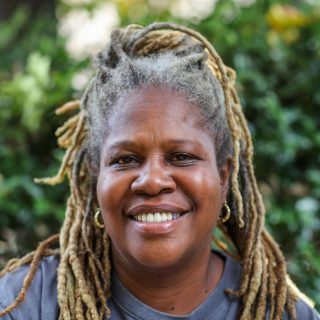
Karen Washington
In the late 1980s, Karen teamed up with Bronx Green-Up to create the Garden of Happiness, which is now a 36-plot community garden. This partnership has continued to bloom through the decades—Bronx Green-Up now serves more than 200 community and school gardens. Karen’s career as an urban farmer and activist has flourished too—among many farms and organizations she has co-founded are Black Urban Growers, Farm School NYC and Rise & Root Farm.
Recently, when the COVID-19 pandemic halted all in-person activities at NYBG, including our hands-on gardening programs, Bronx Green-Up staff worked closely with Karen and other urban farm leaders, as well as NYBG’s Edible Academy, to determine how to best make an impact on the local community: they formed the Bronx Community Farm Hubs network, growing and donating more than 33,000 lbs. of healthful food to organizations that serve those in need. This collaborative network continues for the long term, with Bronx Green-Up coordinating and providing technical assistance to the Bronx Community Farm Hubs while the Edible Academy contributes thousands of vegetable and herb starts as well as harvesting and donating thousands of pounds of fresh produce for the local community each season. It is Karen’s clarity of purpose and dedication to the community that have helped bring these fruits to bear, and we are proud to call her a member of the NYBG family and history.
When I joined the Garden this past September, I thought about beginnings and the institution’s founding. Elizabeth Knight Britton is an inspiration, having helped to build a world-renowned cultural and scientific institution, in addition to carrying out her own academic and conservation work. As I appreciate the preeminent Enid A. Haupt Conservatory and the unparalleled resources held in the LuEsther T. Mertz Library, I think often of the women who have been instrumental to the Garden, helping to ensure its survival and success through their outstanding generosity. And now, as we gear up for a very special exhibition in June, Around the Table: Stories of the Foods We Love, which will focus on the historical and cultural significance of edible plants, I have an even deeper appreciation of Karen Washington, a pioneer in the urban farming and food justice movements. Kudos to them all and to all the women who help to make our world a better place.
SUBSCRIBE
Enter your email address to subscribe to this blog and receive updates on new posts.
